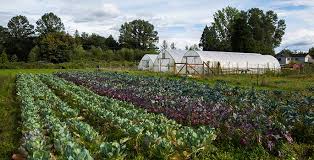You’ve made the decision to expand or diversify your farming operation. One of your initial considerations might involve converting existing infrastructure on the farm, whether it’s a confinement barn or an open feedlot. However, before proceeding, it’s crucial to take into account the rules and regulations governing your plans. “Regardless of the scale of your operation or the type of livestock you’re raising, there are regulatory guidelines to adhere to,” emphasizes Brian Waddingham, executive director of the Coalition to Support Iowa’s Farmers.
In his capacity, Waddingham aids farmers in navigating the extensive array of regulations applicable to Iowa’s agricultural sector. “The Coalition’s core objective is to foster the growth of Iowa’s livestock and poultry industries in a sustainable and responsible manner,” he explains. These regulations extend beyond new construction projects and also pertain to the conversion of existing infrastructures and open feedlots. Despite the complexity of these regulations, farmers should approach the process with confidence. Here are the initial steps to ensure a smooth expansion or conversion process, ultimately saving both time and money.
1. Familiarize Yourself with the Applicable Rules and Regulations for Your Livestock Operations.
Understanding the number of animal units on your farm is crucial as it dictates the regulatory framework you must adhere to. In Iowa, farms with fewer than 500 animal units face different restrictions compared to those with 500 to 999 units or 1,000 or more. Farms exceeding 500 animal units also necessitate a comprehensive manure management plan and certification for proper manure application.
According to Waddingham, farmers should inform the Department of Natural Resources (DNR) when planning to expand livestock operations or convert existing infrastructure. Additionally, they should engage with their manure management plan provider before altering species or production practices to ensure timely updates to the plan prior to introducing livestock to the infrastructure.
2. Prioritize Assessment of Water Sources and Soil Characteristics.
Before undertaking any modifications to existing infrastructure, carefully evaluate nearby water sources and soil types. This preliminary step is essential for farmers considering alterations to confinement barns or open feedlots. Waddingham advises farmers to assess proximity to wells, creeks, rivers, and designated wetlands. Certain infrastructure changes may also be subject to soil type restrictions, necessitating the involvement of an engineer to navigate water and land regulations relevant to the plans.
3. Seek Assistance Promptly When Plans Evolve.
When implementing expansion or conversion changes on the farm, it’s crucial not to hesitate in seeking assistance to ensure compliance. Waddingham emphasizes the importance of reaching out for guidance, highlighting the significant cost savings and peace of mind that can result from a simple phone call.
Offering a confidential and cost-free service since 2004, the Coalition has supported over 5,200 farm families, providing invaluable assistance and contributing to farm growth, community relations, and environmental preservation. As rules and regulations vary by state, farmers are encouraged to contact reputable farmer organizations for location-specific guidance.





